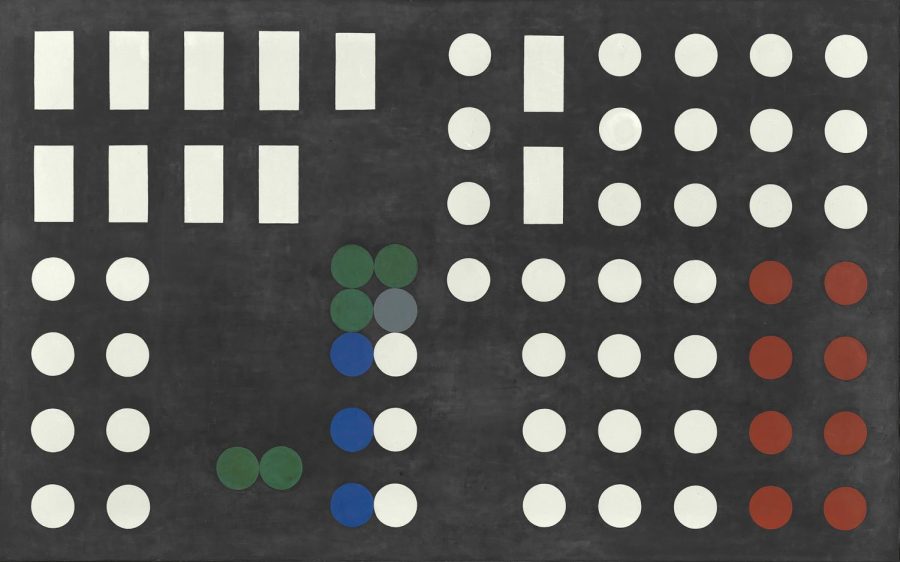Review: ‘Sophie Taeuber-Arp: Living Abstraction’ will transport you back to your childhood
MoMA’s current retrospective on the iconic Dadaist artist Sophie Taeubur-Arp inspires whimsy with her colorful aesthetic and vast array of disciplines.
Sophie Taeuber-Arp. Circle Picture. 1933. Oil on canvas. 29 1/4 × 47 3/16″ (74.3 × 119.8 cm). Kunstmuseum Bern. Gift of Marguerite Arp-Hagenbach © Kunstmuseum Bern
February 15, 2022
“Sophie Taeuber-Arp: Living Abstraction” is a show that inspires a return to innocence as you discover Sophie Taeuber-Arp’s world of geometric abstraction. Her works read as a woven quilt no matter the medium, and the bright use of color is an aesthetic treat to museum patrons.
Walking into the exhibit is an escape from the concrete jungle and an entrance into a world of fantasy. One of the most recent retrospectives at the Museum of Modern Art, running until March 12, it chronologically displays the work of the Swiss artist Taeuber-Arp, who lived 1889-1943.
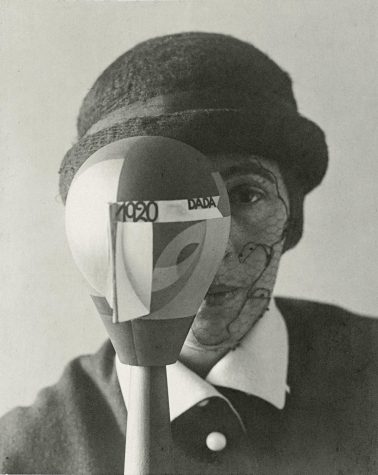
Taeuber-Arp was a turn-of-the-century artist who blurred the lines between practicality and artistry. She showed that design could intersect with everyday objects — from her “Head” sculpture (1920) to bead bags, cushions and furniture pieces. Her work is extremely detailed, with close attention paid to balance and pattern.
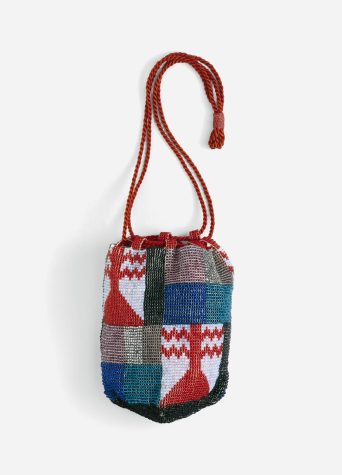
The retrospective starts at the beginning of her career as an art teacher and artisan. The exhibition space is vast and includes several of her original sketches and 2-D grid pieces. As you walk through the gallery, there’s a playful harmony between smaller, more intricate textile work and larger rugs. You can observe the precision and detail of her art in diverse media, such as the delicate beading and embroidery that can be seen in “Beaded Bags’” (circa 1918).
What is especially eye-catching about this exhibition is that despite the range of media, there is a consistent aesthetic in all Taeuber-Arp’s work. Her use of geometric abstraction and color pairing make the bright, joyous colors work in perfect harmony. The piece “Oval Composition with Abstract Motifs” is made with such fragility and understanding that bright geometric shapes subtly emerge from a dark background.
The exhibition successfully captures the expanse of Taeuber-Arp’s artistic career and the spirit of Dada. Dadaism was an art movement that originated in Taeuber-Arp’s place of death, Zurich, Switzerland. A reaction to the catastrophic events of World War I, the movement is characterized for being satirical and nonsensical.
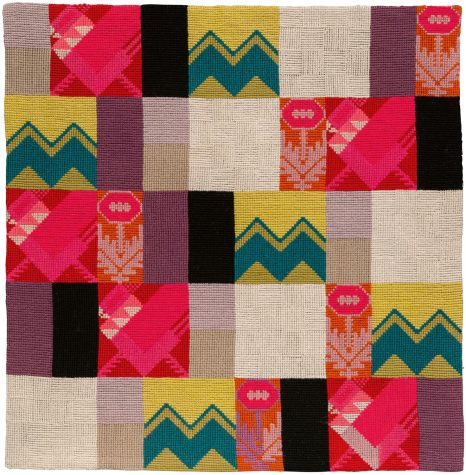
Dada lives through Taeuber-Arp’s playfulness with non-traditional mediums, the products ranging from wearable items like beaded handbags and jewelry to a cushion with red-winged creatures and blue and green zig zag patterns.
Another unique facet of the exhibition is the marionette room. The figures within were commissioned to Taeuber-Arp in 1918 for an adaptation of the play “King Stag” by Carlo Gozzi. Taeuber-Arp’s marionettes, just like her paintings and prints, play with geometric shapes and colors to animate a story. The story of kings, wizards and magical surrealism come to life through her use of exaggerated shapes and geometric expressions.
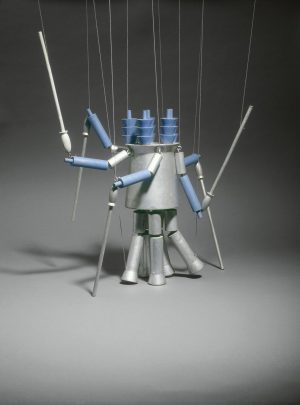
In her later years, Taeuber-Arp was exiled to the south of France during the Nazi occupation and found herself working with printed media and drawings, the latter of which have fine lines and lack her usual color. Taeuber-Arp would die of accidental carbon monoxide poisoning in 1943. To this day, she continues to be one of the most renowned artists of the Dadaist movement and one of the first female artists to achieve international success. The exhibition includes around 300 works that continue to challenge our understanding of how we define fine art, craft and design.
“Sophie Taeuber-Arp: Living Abstraction” is on view at the Museum of Modern Art until March 12.
Contact Natalia Palacino Camargo at [email protected].


























































































































































